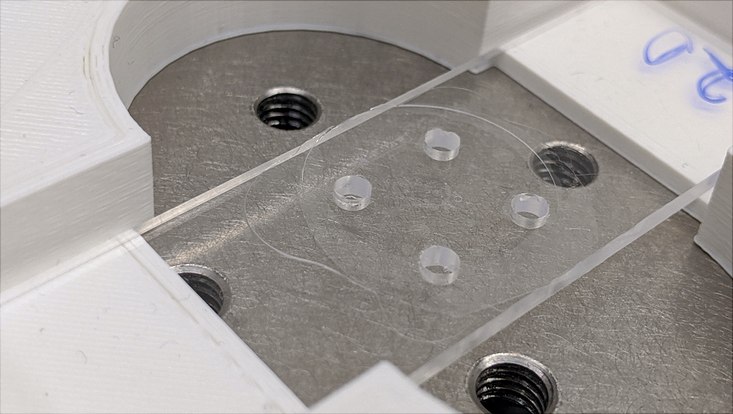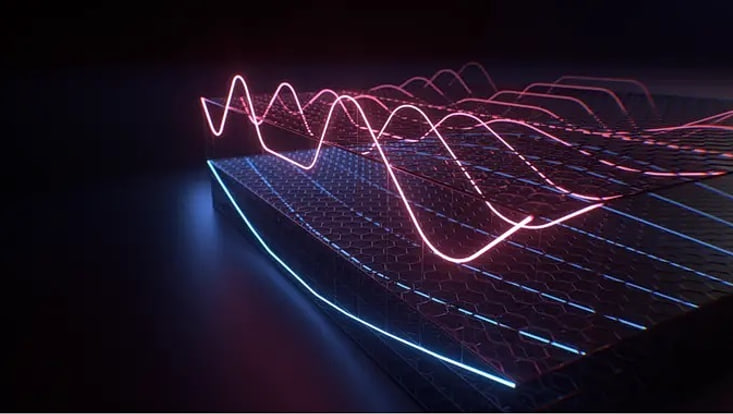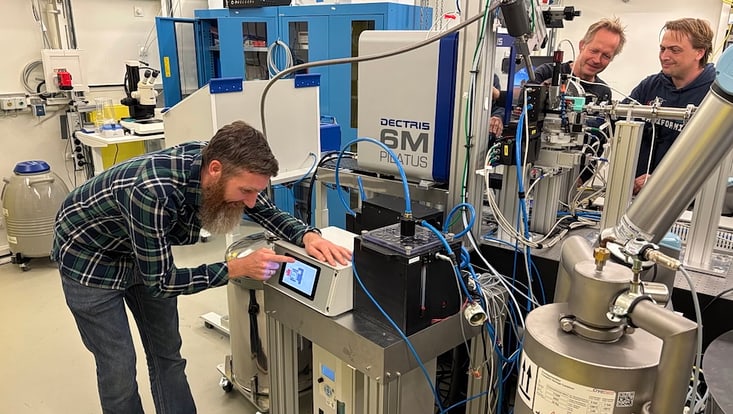Imaging of Matter
Research team at Universität Hamburg works on new COVID-19 rapid test
20 November 2020

Photo: UHH/Irene Fernandez-Cuesta
An interdisciplinary research team from Universität Hamburg and the Deutsches Elektronen-Synchrotron wants to develop a new test for the screening of infections with SARS-CoV-2, which should be inexpensive, fast and mobile. The first prototype should be ready in 1.5 years.
The COVID pandemic is far from over and the need for fast, efficient testing is high. More than 26 million laboratory tests for SARS-CoV-2 have been carried out in Germany so far and a large number will be added in the coming weeks. The two currently available test methods either require extensive laboratory processing, which takes time (PCR method = real-time reverse transcriptase polymerase chain reaction), or are not accurate enough to correctly diagnose even patients with a low viral load (rapid tests).
Highly sensitive test that works much faster
"We want to develop a highly sensitive test for the coronavirus that works much faster and does not require a laboratory," says Dr. Irene Fernandez-Cuesta from the Department of Physics at Universität Hamburg. The test should also be quantitative in order to detect infections in early stages. Moreover, the entire test equipment will be the size of a microwave oven and deliver a result within tens of minutes and thus also enable on-site testing, for example in retirement homes or airports.
For the planned method, a sample is taken from the mouth, nose or throat of the person to be examined. The liquid sample is placed on a newly developed plastic chip, inserted into a special read-out device and tested on two different levels: First, a rapid screening for the presence of corona viruses is carried out by detecting and counting them individually; samples in which no viruses are found can be considered COVID-19 negative. If the test is positive, the sample can be further examined in a second step, for example by analyzing the RNA of the virus. "This type of reading could provide information about the patient's viral load and would work even at very low concentrations, which is the key to detecting infections in early stages," says Fernandez-Cuesta.
Interdisciplinary cooperation with DESY
An interdisciplinary team is working on the development of the test: Fernandez-Cuesta's research group, which is part of the "CUI: Advanced Imaging of Matter" cluster of excellence and is based at the new Hamburg Advanced Research Centre for Bioorganic Chemistry (HARBOR), has experience in the nanosciences and nanotechnology. Franziska Esmek and other member of her team will develop the chips as well as virion and RNA detection. In recent years, the scientists have already developed a method for the detection and analysis of individual DNA molecules in real time. These results were tested in biomedical samples and bacteriophages and form the basis of the project.
The team at DESY led by Prof. Dr. Ingrid-Maria Gregor and Dr. Sergio Diez will design and build the test station for portable and highly sensitive in-situ analysis. "Our DESY-ATLAS group has wide expertise in the precision assembly of detectors down to micron level," says Dr. Sergio Diez Cornell.
Extensive support and collaboration
In four project phases the test assembly is supposed to go from prototype to market maturity; the current phase 1 will focus on demonstrating the functionality of the tests and developing the portable test device.
The strategy funds of DESY and the University of Hamburg are providing funds for this purpose. The researchers will start the work with the support of Universität Hamburg, the cluster of excellence “CUI: Advanced Imaging of Matter” and DESY, in close collaboration with the Technology Transfer Office at the Bahrenfeld campus, the University Medical Center Hamburg-Eppendorf (UKE) and the Centre for Structural Systems Biology (CSSB). "In addition, we will continue to raise funds," says Fernandez-Cuesta. "Because the technology is not limited to SARS-CoV-2, but can be easily adapted for the analysis of other viruses or microorganisms". German text: Maria Latos, MIN; Translation: DESY, ed.


